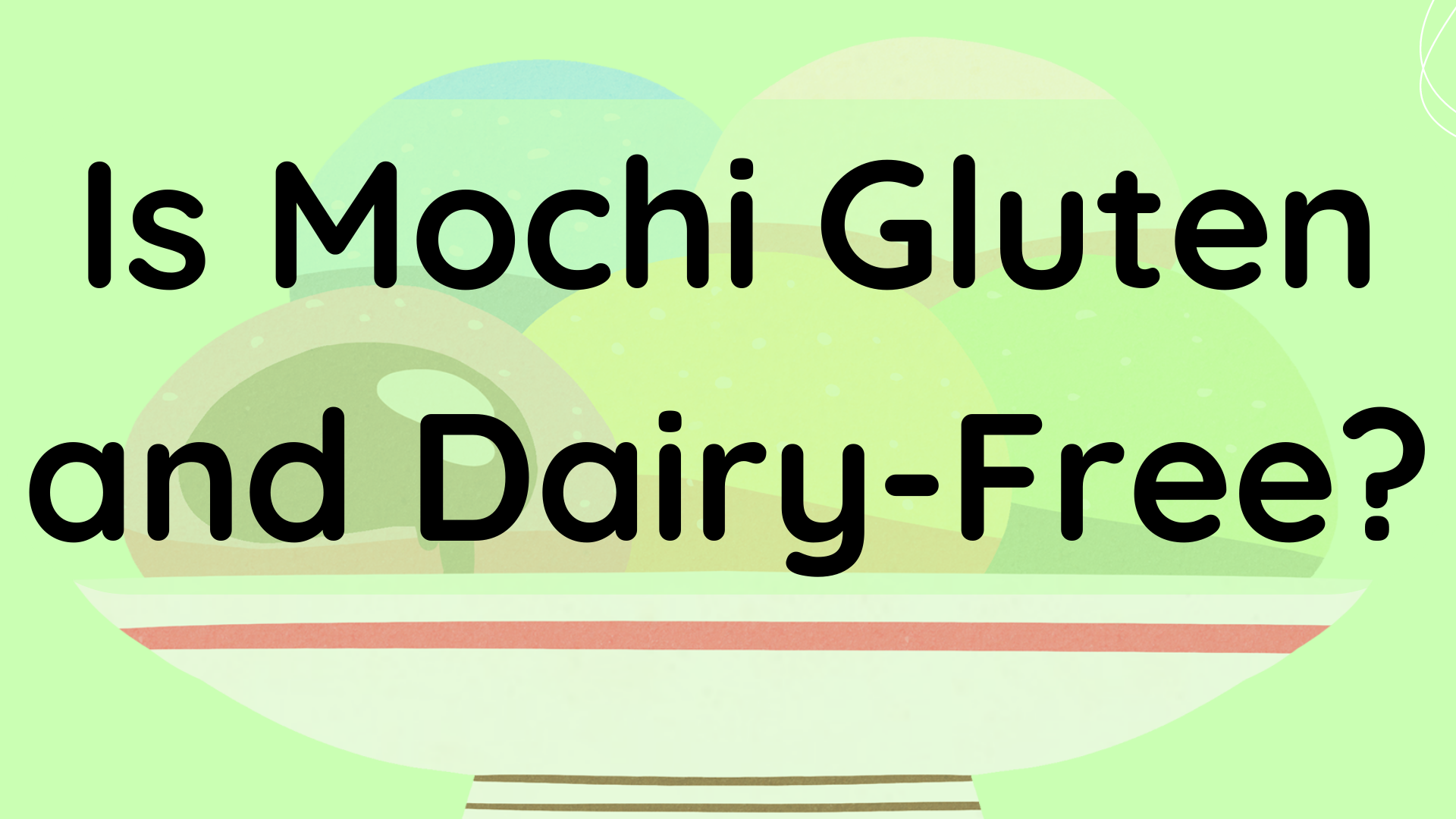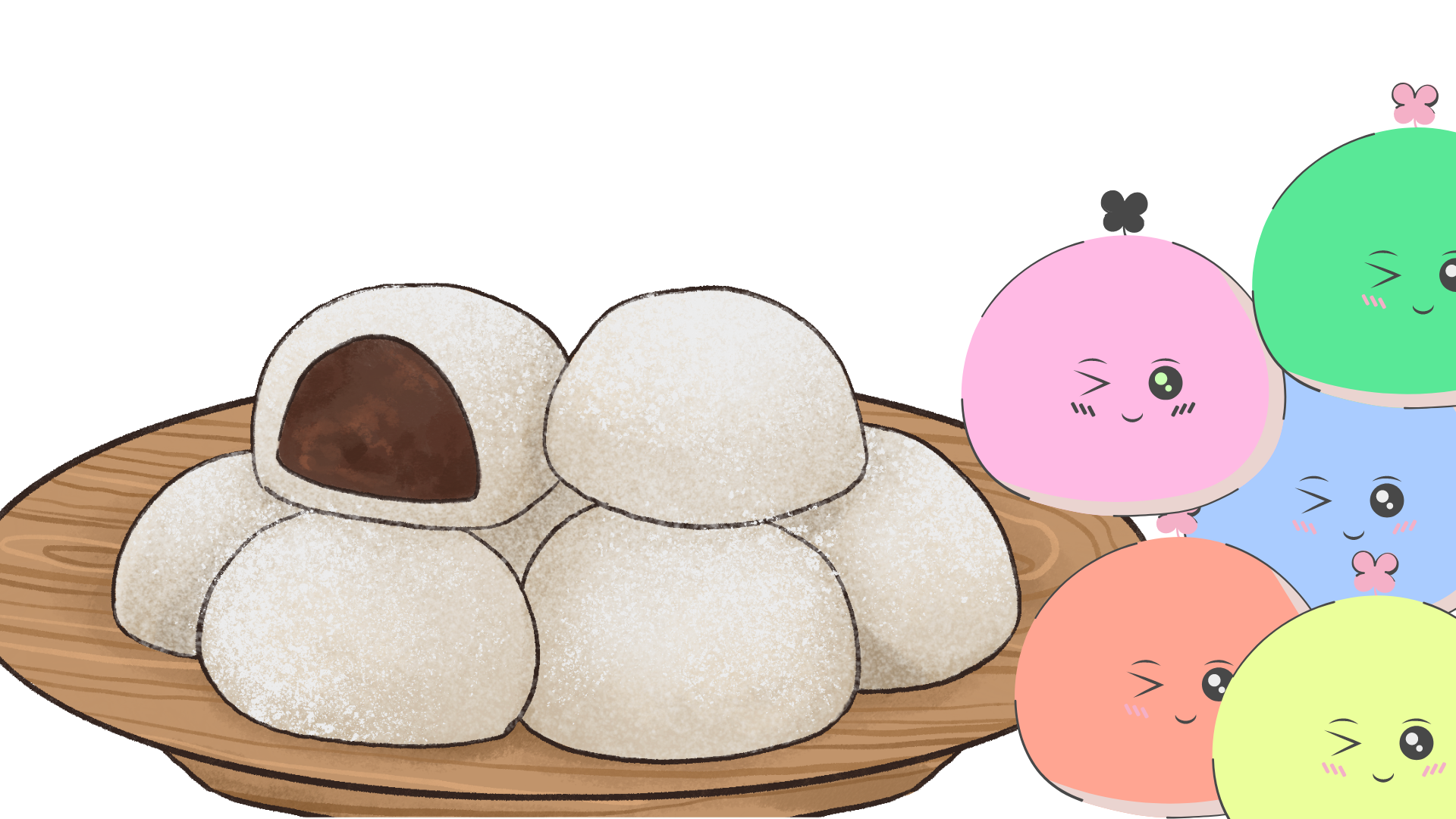
Is Mochi Gluten and Dairy-Free?
Yes, it is dairy free. As for its dairy content, pure mochi made from glutinous rice does not contain dairy products. The basic ingredients for mochi typically include glutinous rice, water, and sometimes sugar. However, similar to gluten, some variations of Mochi Gluten may incorporate dairy-based fillings or coatings. For example, mochi ice cream often contains dairy in the form of ice cream wrapped in a layer of mochi. Therefore, individuals with dairy allergies or lactose intolerance should check the ingredients or choose dairy-free versions of mochi to ensure it aligns with their dietary needs.
Mochi is a traditional Japanese rice cake made from glutinous rice, also known as sweet rice or sticky rice. One of the key characteristics of mochi is its chewy and soft texture. When it comes to its gluten content, pure mochi is typically gluten-free. Glutinous rice does not contain gluten, which is a protein found in wheat, barley, and rye. Therefore, if mochi is made solely from glutinous rice and does not include any gluten-containing ingredients, it is considered gluten-free.
However, it’s important to note that some variations of mochi, particularly those with added fillings or flavors, may include ingredients that contain gluten. For instance, certain types of Mochi Gluten may incorporate wheat-based ingredients for fillings such as red bean paste or include additives that contain gluten. Therefore, individuals with gluten sensitivities or celiac disease should carefully check the ingredients or opt for specifically labeled gluten-free Mochi Gluten products to ensure they are consuming a gluten-free version.
What is mochi made out of?
Mochi is a traditional Japanese rice cake that is primarily made from glutinous rice, also known as sweet rice or sticky rice. Glutinous rice is distinct from regular rice varieties as it contains a higher proportion of starch and has a sticky texture when cooked. The rice is typically steamed and then pounded or mashed into a smooth and elastic dough. This dough is then shaped into various forms, such as round balls or squares, and can be filled with different ingredients like sweet bean paste, fruits, or ice cream.
Is mochi good for weight loss?
When considering mochi’s impact on weight loss, it’s important to look at its nutritional profile and consumption in moderation. Mochi made solely from glutinous rice is naturally gluten-free, as glutinous rice does not contain gluten. As for its calorie content, mochi can vary depending on the size, fillings, and additional ingredients used.
While mochi can be a tasty treat, it is important to note that it is relatively high in calories due to its dense texture and often sweet fillings. Therefore, portion control is crucial when incorporating mochi into a weight loss plan. Additionally, it’s important to be mindful of the fillings and ingredients used in mochi, as certain variations may contain higher levels of added sugars or fats.
Including mochi as an occasional treat within a balanced diet can be enjoyed without hindering weight loss goals. However, it’s important to prioritize overall calorie intake and ensure that mochi consumption fits into one’s daily energy needs. Pairing mochi with other nutrient-dense foods such as fruits or incorporating it into a balanced meal can help maintain a well-rounded diet while enjoying this traditional Japanese delicacy.
In conclusion, mochi made from glutinous rice is naturally gluten-free. While it can be a delicious indulgence, moderation and portion control are key when incorporating mochi into a weight loss plan. Being mindful of the fillings and ingredients used in mochi can also help make healthier choices. By considering these factors, mochi can be enjoyed as part of a varied and balanced diet while still supporting weight loss efforts.

Is Mochi Gluten and Dairy-Free?
Is Mochi dangerous to eat?
No, mochi is not inherently dangerous to eat. However, it’s important to be aware of certain considerations to ensure safe consumption, particularly for individuals who may have specific dietary restrictions or chewing difficulties
When it comes to gluten content, pure mochi made from glutinous rice is gluten-free. Glutinous rice does not contain gluten, which is a protein found in wheat, barley, and rye. Therefore, individuals with gluten sensitivities or celiac disease can safely enjoy mochi made solely from glutinous rice without worrying about gluten-related health issues.
However, it’s important to note that some variations of mochi, especially those with added fillings or flavors, may include ingredients that contain gluten. For instance, certain types of mochi may incorporate wheat-based ingredients for fillings or include additives that contain gluten. Therefore, individuals with gluten sensitivities or celiac disease should carefully check the ingredients or opt for specifically labeled gluten-free mochi products to ensure they are consuming a gluten-free version.
Is Mochi hard to digest?
Mochi’s digestibility can vary depending on personal factors and individual digestive health. The texture of mochi is sticky and chewy, which can make it more challenging to digest for some individuals, especially those with digestive disorders or difficulty swallowing.
The sticky nature of mochi can pose a risk of choking, particularly if consumed without thoroughly chewing or if consumed in large, unmanageable pieces. It’s important to take small bites and chew mochi thoroughly to aid in the digestion process and reduce the risk of choking. For individuals with difficulty chewing or swallowing, it may be advisable to avoid or modify the consumption of mochi to ensure safe and comfortable eating.
What does mochi taste like?
Mochi has a unique taste that can be described as subtly sweet and mildly flavored. The primary taste of mochi comes from the glutinous rice used in its preparation. The rice itself has a mild, slightly sweet flavor that is complemented by the addition of fillings or coatings, which can vary depending on the type of mochi.
The beauty of mochi lies in its versatility, as it can be filled with various ingredients such as sweet bean paste, fruits, ice cream, or even savory options like vegetables or meat. These fillings add different flavors and textures to the overall taste experience of mochi.
The texture of mochi is also a significant part of its appeal. When properly made, mochi has a soft, chewy, and slightly elastic texture that is distinct from other rice-based desserts. This unique texture, combined with its subtle sweetness, contributes to the overall enjoyment of mochi.
In conclusion, mochi made from glutinous rice is naturally gluten-free and has a subtly sweet and mildly flavored taste. The taste of mochi can vary depending on the fillings or coatings used, but the primary flavor comes from the glutinous rice itself. The soft, chewy texture adds to the overall pleasure of eating mochi. By exploring different fillings and variations, individuals can discover a wide range of taste experiences when enjoying this delightful Japanese treat.






